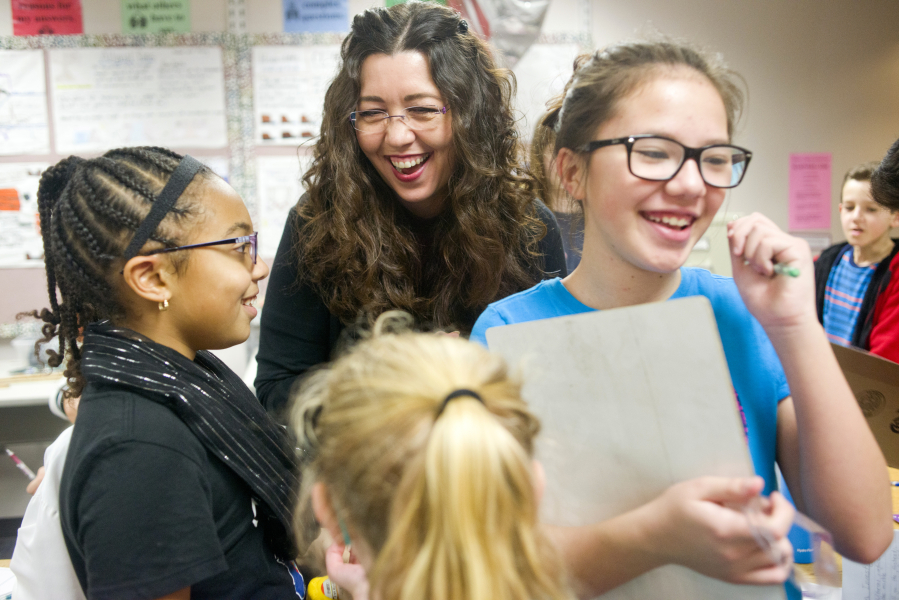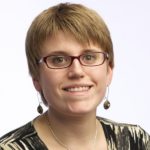In the minutes after recess, Fisher’s Landing Elementary School teacher Kimberley Astle’s fifth-grade students hustle into class, put on their lab coats and get to work.
In the classroom’s science period, students are testing how shifting different variables will affect how far a marble rolls after being pushed down a ramp. Height, surface material and marble size are all in the mix for students.
It’s a largely student-driven exercise, with Astle helping steer where she’s needed.
“The students really get to own the science,” Astle said.
It’s that philosophy — which reflects new national standards for science education — that has earned Astle accolades for her teaching. Recently, she was accepted as a semifinalist for the Albert Einstein Distinguished Educator Fellowship Program, managed by the U.S. Department of Energy. If selected as a fellow, Astle will spend 11 months working in a federal agency or congressional office to help shape education policy around science education.
She also recently was asked to serve for three years on the National Science Teachers Association Standing Committee on Professional Development. Astle will travel to Los Angeles next month to begin developing training for teachers.
It isn’t the first time Astle has been recognized for her work teaching science. Last year, she was a national finalist for the Presidential Award for Excellence in Math and Science Teaching. She has not found out yet if she has received the award.
Astle is humble about the recognition.
“I’m kind of surprised that people really care what I’m doing,” she said with a laugh.
James Cantonwine, a science, health and physical education specialist at Evergreen Public Schools, called Astle a phenomenal teacher who helps her students understand the significance of the science they’re doing.
“It seems relevant,” Cantonwine said. “It seems very authentic. They feel like they’re doing the same work scientists are doing.”
Embracing standards
Jayden Nash, 11, and two fellow students were working together in Astle’s class to find out whether the steepness of a ramp would affect how far a marble rolled along the ground.
In this physics and energy unit, students were allowed to pick whatever variable they wanted to test. Jayden enjoys being able to do experiments to answer his own questions about science, he said.
“I think it’s very cool,” he said. “(Astle) does a good job.”
Astle, who has been teaching for 16 years, did not initially go into teaching expecting to be so excited about science. She went into early childhood education, passionate about teaching young children how to read.
While she’s maintained that love, she said watching her own children grow made her realize how exciting teaching older students can be. It was in elementary school that she found her niche teaching science.
She began to study the subject more, attending professional development events to prepare her students to pass state science tests. She shared what she learned with fellow teachers, and her passion for the subject grew. Her students fed off her energy for the subject, and she in turn, theirs.
“I think I’m a secret physicist,” she said.
Astle also has embraced the Next Generation Science Standards, new federal standards for the way science should be taught. In the new standards, students do more hands-on work in the classroom, investigating problems on their own rather than teachers giving students the answers.
“We need people who are really out-of-the-box thinkers,” Astle said. “We need engineers. We need problem solvers. That has to be a part of education. They have to know how to think.”
Cantonwine said Astle’s passion for the subject is obvious.
“It’s very clear that this is something she really lives for,” Cantonwine said. “It’s not just her job. It’s her vocation. It’s her calling. That shows in her work with teachers, and it shows in her work with kids.”




